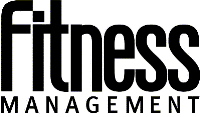
Fitness facility operators are pretty smart when it comes to membership dues pricing. At least when compared to most members who sign up for club memberships.
Our industry has talked for years about how to make people understand the “value” of their memberships. It’s said that the industry has underpriced its services, which has led to the perception that a membership is really not worth that much. But, are memberships really worth the average $50 or $60 a month being charged?
In recent years, there has been more and more talk about charging users on a pay-as-you-go basis. Most facilities offer the option of paying $10 for a visit, without signing up for a membership. Others are starting to offer some or all of their services as pay-as-you-go only. But, wouldn’t it seem logical that fitness facilities would make much more money by charging people that $10 usage fee for every workout?
Not so. According to a paper published in 2002 by researchers at the University of California at Berkeley, when people purchase a membership, they actually believe they will go to the club more often than they do. So, they assume that the monthly rate they are paying is a good deal. But what the researchers found was that most members only use the gym an average of 4.8 times per month. If the monthly membership dues are $60 a month, that means that the average member is paying about $17 per visit. That’s $7 more than the $10 daily use fee.
Another study performed in the Boston area and reported on in January in the Chicago Tribune turned up the same findings. Researchers looked at 8,000 fitness center memberships over a three-year period, and found that most people never make it to the gym three times a week (like they thought they would); instead, they only work out about one time per week. These researchers also figured it to be about $17 per visit, and concluded that 80 percent of the people studied would have been better off paying the $10 daily fee instead of purchasing a membership.
Fitness center operators know this. Read my blog entry The Big Fat Truth About Health Clubs. So why, then, at all of the industry trade show seminars on customer service, are the speakers always recommending that staff get on the phone and call members who aren’t coming in? Health club operators know that that would be foolish. Even an article in the Financial Times this past January highlights why fitness center dues structures rely on those members who sign up and never use the facility. They don’t want to remind these members that their money is being wasted.
So, the whole argument about value is really not true. As the UC Berkeley researchers conclude, most health club members either make “time-inconsistent choices” or they have “limited cognitive abilities.” Pretty smart on the part of club owners, huh?




